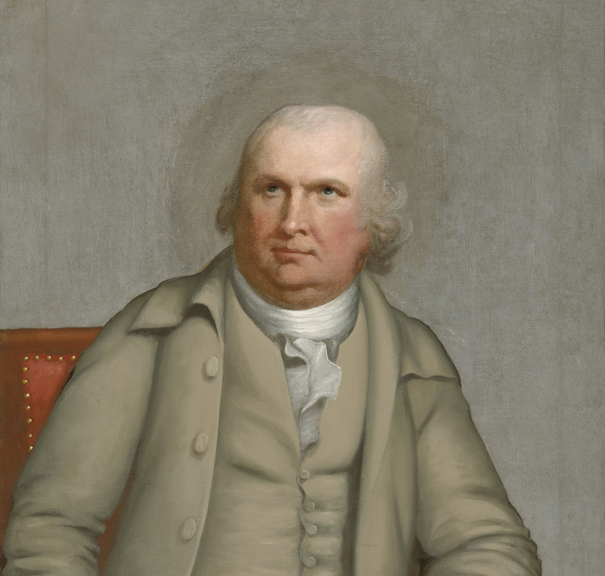
When one thinks of injuries received in battle during the Revolutionary War wounds from gunshots, bayonets and swords come to mind. A far less common wound was that of a scalping victim. In most cases the scalping victim was already dead or soon would be dead when the scalping took place. There were however instances where a person was scalped and either was not otherwise wounded or the wound was not mortal. The problem then becomes how to medically treat a patient with a scalped head.
Despite the fact that scalping had been practiced for centuries and some victims lived through their ordeal, the literature of the period is mostly silent on the techniques for treating the wound. Samuel Sharpe’s 1769 Treatise on the Operations of Surgery does not mention any scalping treatments.[1] Likewise, John Jones’ Plain Concise Practical Remarks on the Treatment of Wounds and Fractures written in 1776 for the Patriot surgeon facing battle casualties ignores the possibility of a live scalping victim.[2]
Dr. James Thacher, a Continental Army surgeon, published his Military Journal of the American Revolution in 1823. He describes a scalping victim as one of “the most remarkable occurrences which came under my observation.” A Captain Greg, while stationed at Fort Stanwix in New York, had been wounded, scalped and left for dead, but he was not dead. He was found alive and transported to Dr. Thacher’s hospital.
Dr. Thacher described one form of the Native American scalping procedure. “With a knife they make a circular cut from the forehead, quite round, just above the ears, then taking hold of the skin with their teeth, they tear off the whole hairy scalp in an instant, with wonderful dexterity.”
To Dr. Thacher, Captain Greg “was a most frightful spectacle, the whole of his scalp was removed…” Regrettably, he does not explain the method of treatment. He only says that “this unfortunate man, after suffering extremely for a long time, finally recovered, and appeared to be well satisfied in having his scalp restored to him, though uncovered with hair.” [3]
The history of treating scalping injuries is murky. In the 1600s Augustin Belloste, a French surgeon, explained that some sort of surgery had to take place in order for the wound to heal as the skin could not regenerate on its own because the skull was very smooth. The first recorded treatment was to use a rasp to puncture the diploe and roughen the surface of the skull. The diploe, the area between two layers of compact bone containing red bone marrow, had to be reached in order for new skin to grow. Once the diploe is pierced granulation occurs, “fleshy projections formed on the surface of a gaping wound…”[4]
Each area of granulation produces a growth of new capillaries and forms scar tissue thus providing the area with a rich blood supply, which ultimately produces healthy living “proud-flesh,” the new scar tissue. According to Belloste, the rasp method was undesirable for a number of reasons. First, the friction from scraping the rasp across hard bone produced heat and altered the formation of the skull. Further, rasping thinned the bone and was painful.[5] Pegging, or boring small holes in the skull proved to be a better treatment and also was not painful until the new scar tissue attached to the uninjured scalp. There were also cases where scalps, if immediately recovered, were replaced on the skull of the victim. These cases apparently were very rare.[6]
If the scalped head was left untreated the exposed bone would eventually become necrotic and separate from the healthy bone or it could cause osteomyelitis, an inflammation of the bone and marrow. Either of these conditions would be fatal.[7] In 1769 James Robertson saw a young South Carolinian who had been scalped in 1761. The exposed bone of his skull was “perfectly bare, dry, and black.” Robertson believed the man could have been successfully treated even after eight years. However, the man was not treated and died less than a year later. The bare bone of his skull had become necrotic and separated exposing the man’s brain.
James Robertson was a pioneer not a medical doctor. He founded the city of Nashville and is known as the “father of Tennessee.” He learned the procedure to treat scalping victims from one Dr. Patrick Vance. James Robertson’s son, Felix, was a medical doctor and recorded his father’s experiences and treatments in Remarks on the Management of a Scalped-Head, published in 1806.[8]
Robertson’s first experience with treating a scalping victim was in 1777. The patient was scalped so “nearly the whole of his head skinned.” Dr. Vance was treating the man but could not remain for a prolonged period of time so instructed Robertson in the art of skull boring. Vance demonstrated how to bore holes as the skull became black. Robertson described the method, “I have found that a flat pointed straight awl is the best instrument to bore with, as the skull is thick, and somewhat difficult to penetrate. When the awl is nearly through, this instrument should be borne more lightly upon. The time to quit boring is when a reddish fluid appears on the point of the awl. I bore, at first, about one inch apart, and, as the flesh appears to rise in those holes, I bore a number more between the first.”[9] Besides boring holes in the skull the wound had to be cleaned and dressed at least once a day to prevent infection. The patient recovered from the scalping.
Apparently, the success rate for this treatment was very good. The scalped head, according to Robertson, “cures very slowly” and the average recovery period was two years. Remarkably, Robertson reported that hair would even grow back, although not as thickly, on the new scalp. The patient would regain feeling once the new skin grew sufficiently to attach to the edge of the uninjured part of the original flesh remaining on the skull.
This method of boring, or pegging, used during the colonial period continues to be practiced today.
The author wishes to thank Lisa A. Ennis for her assistance with the research of this article.
[1] Sharpe, Samuel, A Treatise on the Operations of Surgery, With a Description and Representation of the Instruments Used in Performing Them: to Which is Prefixed an Introduction on the Nature and Treatment of Wounds, Abscesses, and Ulcers, London, G. Robinson, 1769.
[2] Jones, John, M.D., Plain Concise Practical Remarks, on the Treatment of Wounds and Fractures; to Which is Added, An Appendix, on Camp and Military Hospitals, Principally Designed for the Use of Young Military and Naval Surgeons, in North-America, Philadelphia, Robert Bell, 1776.
[3] Thacher, James, M.D., Military Journal of the American Revolution, 1775-1783, Gansevoort, NY, Corner House Historical Publications, 1998. Reprint of edition of Hartford, CT, Hurlbut, Williams & Co., 1862, p. 115.
[4] Thomas, Clayon, M.D., Taber’s Cyclopedic Medical Dictionary 18th Edition, Philadelphia, F.A. Davis Company, 1997, p. 510, 818.
[5] Strayer, Luther, M.D., “Augustin Belloste and the Treatment for Avulsion of the Scalp,” The New England Journal of Medicine, vol. 220, June 1, 1939, p. 903.
[7] Lewis, James V., M.D., and Colvett, Kyle T., M.D., “Scalping Injuries: Report on a Historical Case,” Journal of the Tennessee Medical Association, 86 (April 1993): p. 154.










2 Comments
Great article. Life was hard.
There is a good description of treating scalping in Allan W. Eckert’s book “The Frontiersmen”. As I recall, it involved drilling holes into the scalp or skull until a pink fluid starts to come out, then you move a little bit and do it again, and again. It was a very good documentation, in a very good book.